eBay Historical GPU Prices 2023: November 2023 Update
How much for a used graphics card this holiday season?
Mar 11–18, 2021
This is the last week where our eBay scraping functioned properly (using code originally developed by Michael Driscoll, which we modified for our purposes). Mostly, we adjusted the search parameters and tweaked the look of the charts.
Here are the charts for Mar 11–18, 2021. We've gathered data on 62 different GPUs, which we'll organize into groups based on the GPU generations.
Ampere and RDNA2 Graphics Cards

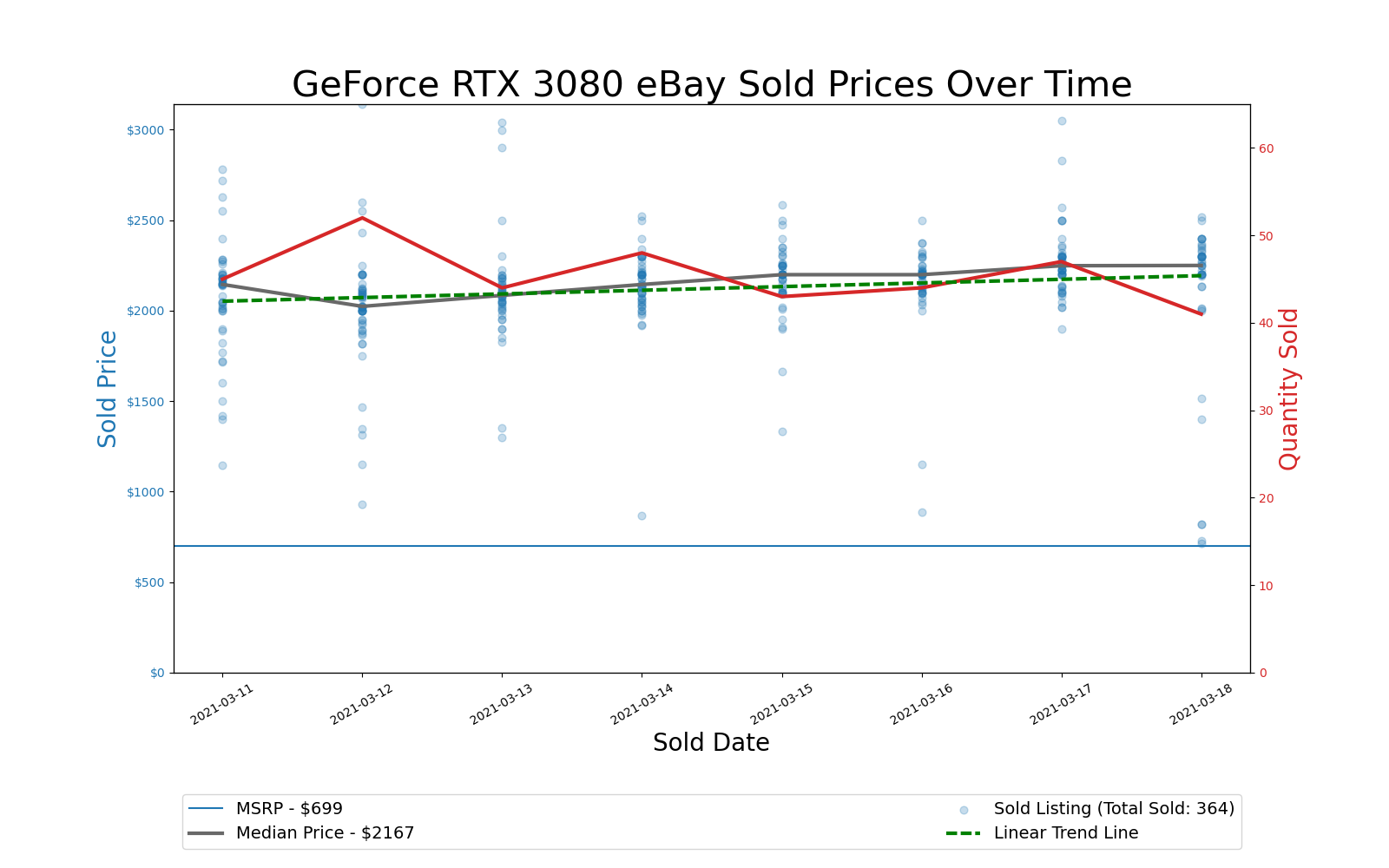

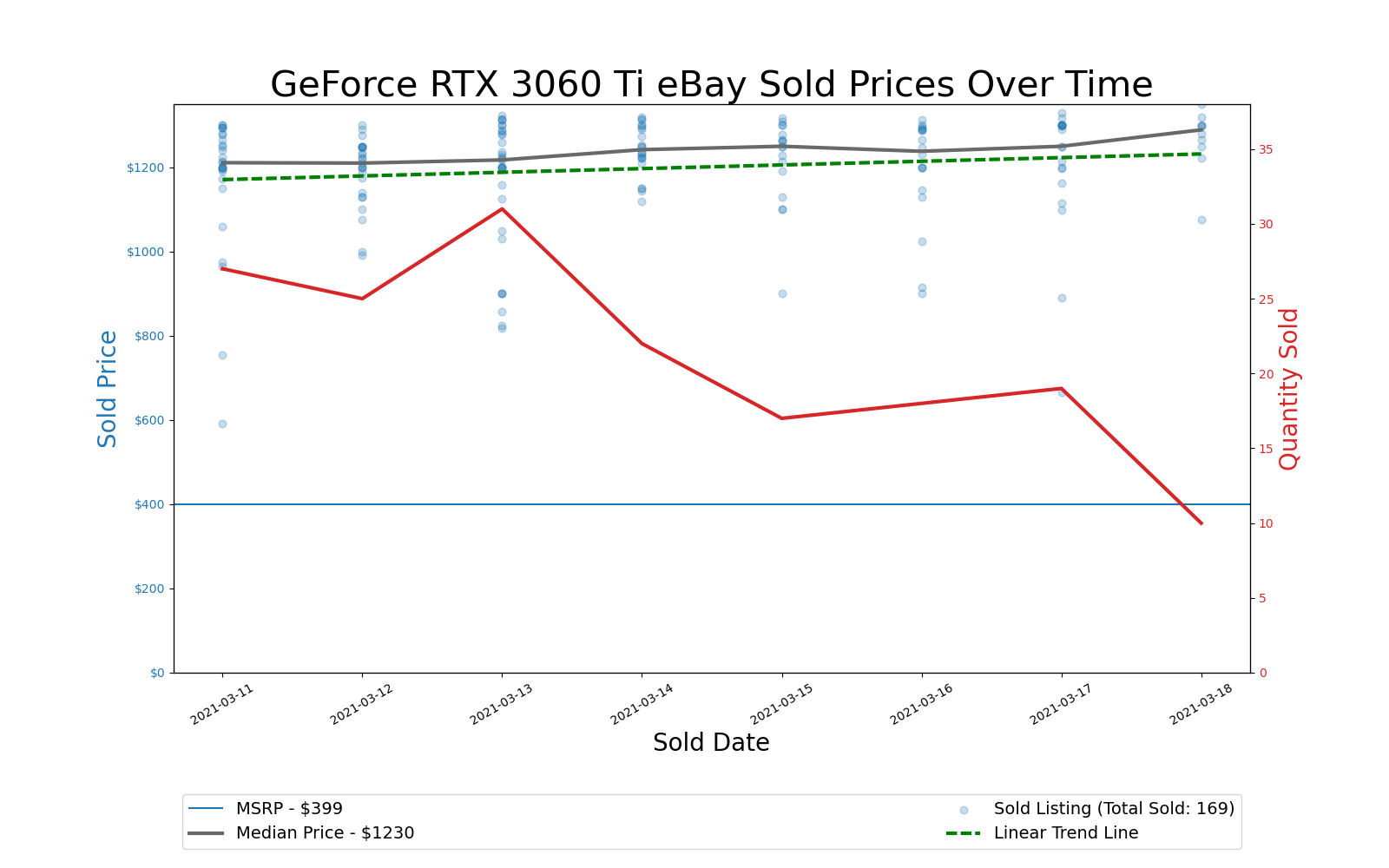





The latest generation graphics cards from AMD and Nvidia see the most demand, and every Ampere and RDNA2 card saw slightly higher prices during the past week. That's likely thanks to Bitcoin reaching a new all-time high of over $61,000 on March 13, and while prices dropped a bit after that spike, it's still up 3% over the past week. Ethereum saw a similar jump in price, but it wasn't able to eclipse it's previous high of $2,030, peaking at around $1,930.
In total, nearly 2,000 Nvidia Ampere graphics cards traded hands on eBay last week (1,984 by our count). That's a bit less than the previous week (2,085), though the time of day when we collect the data likely accounts for some of that. AMD's numbers are quite a bit lower, with 260 RDNA2 cards sold in total. That's up from the 188 sold the previous week, and the 13 RX 6700 XT units only had a small impact. We'll have to see if the 6700 XT picks up next week, though at these prices it's hard to imagine there are many buyers.
Of course, we're only able to pull data from eBay's public listings. While we suspect the relative proportion of AMD to Nvidia sales at retail is similar, there's certainly a wider margin of error. With ever major site still showing every recent GPU as out of stock or backordered, though, every GPU produced continues to get snapped up by a voracious market.
Turing and RDNA1 Graphics Cards

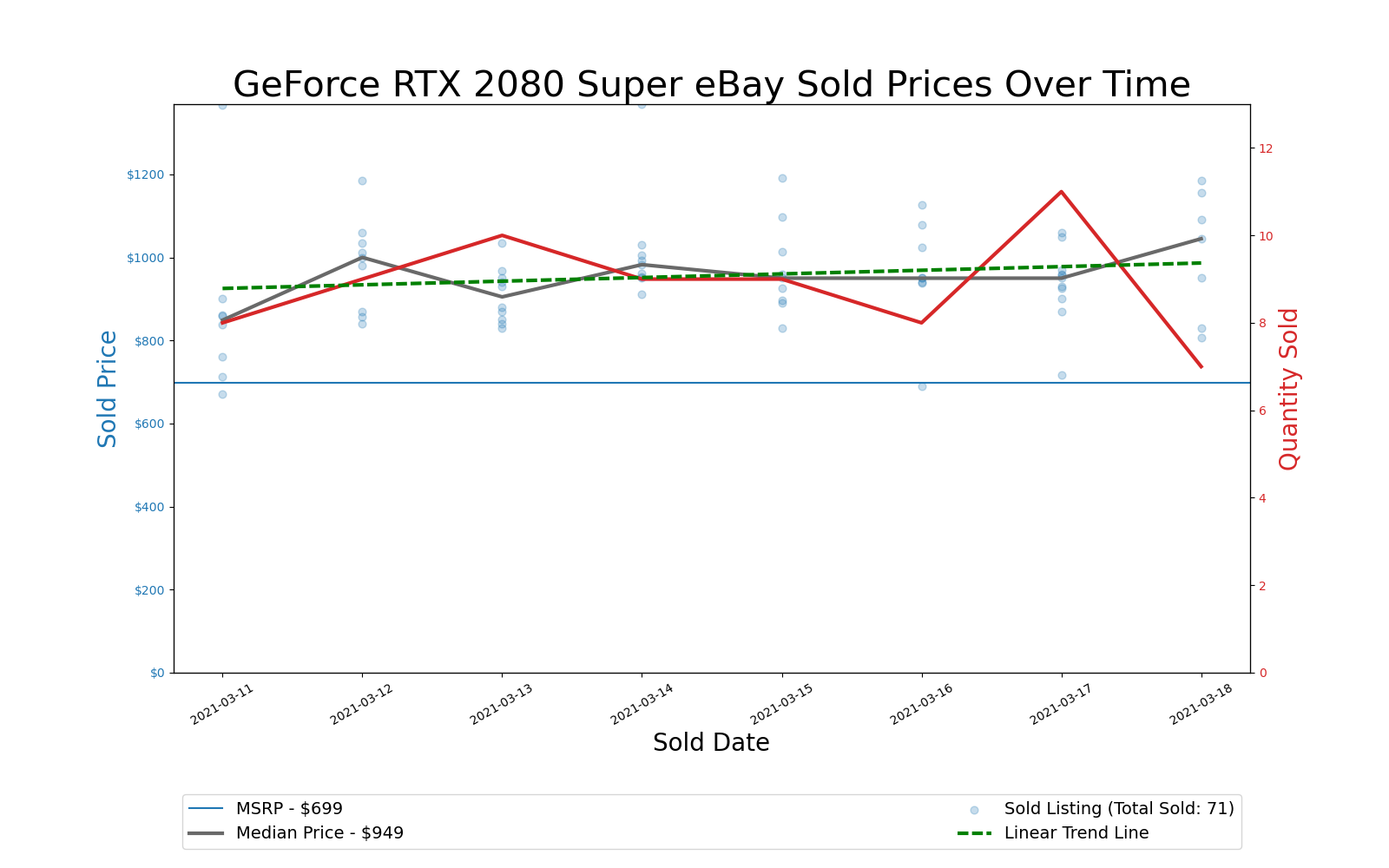
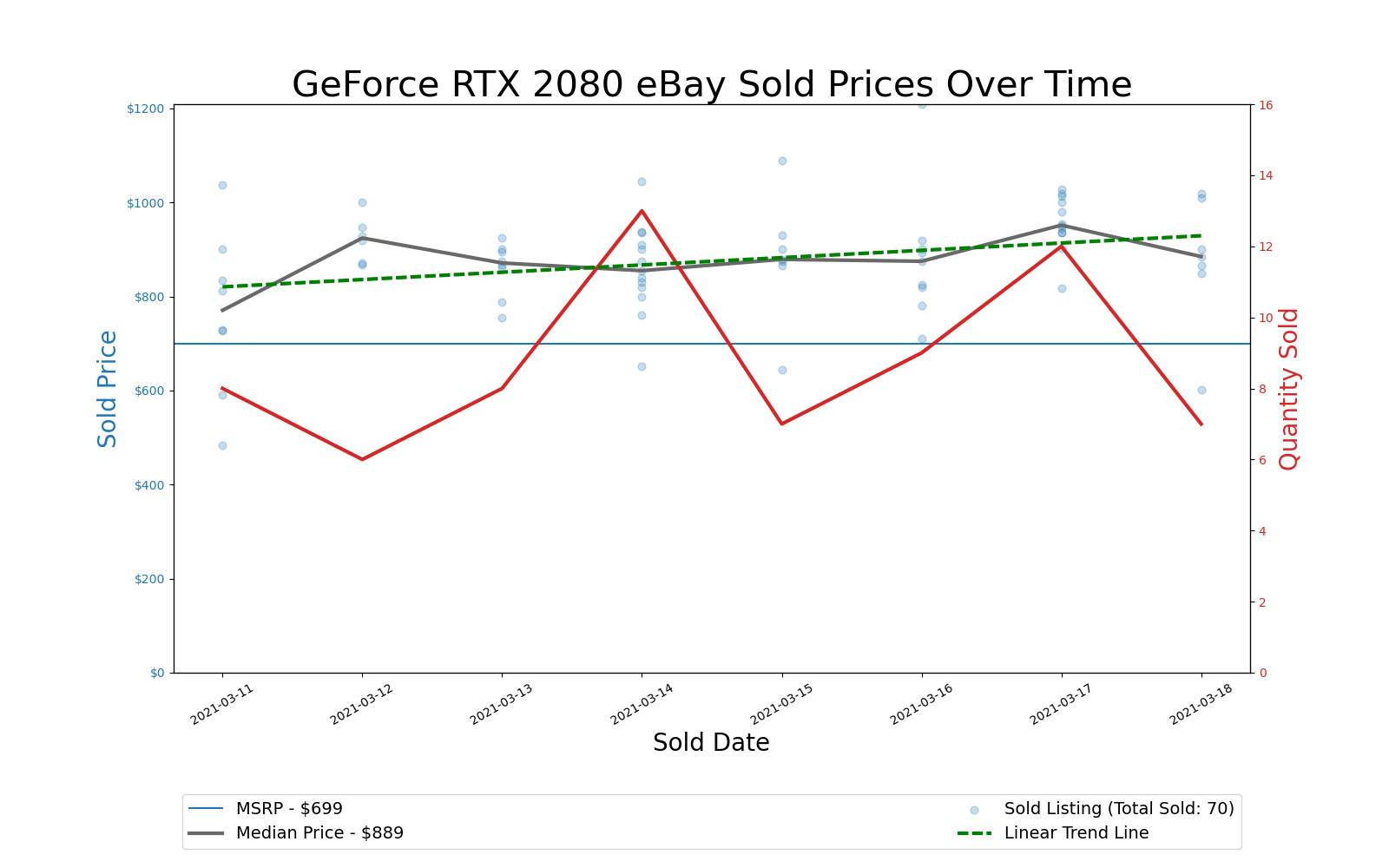




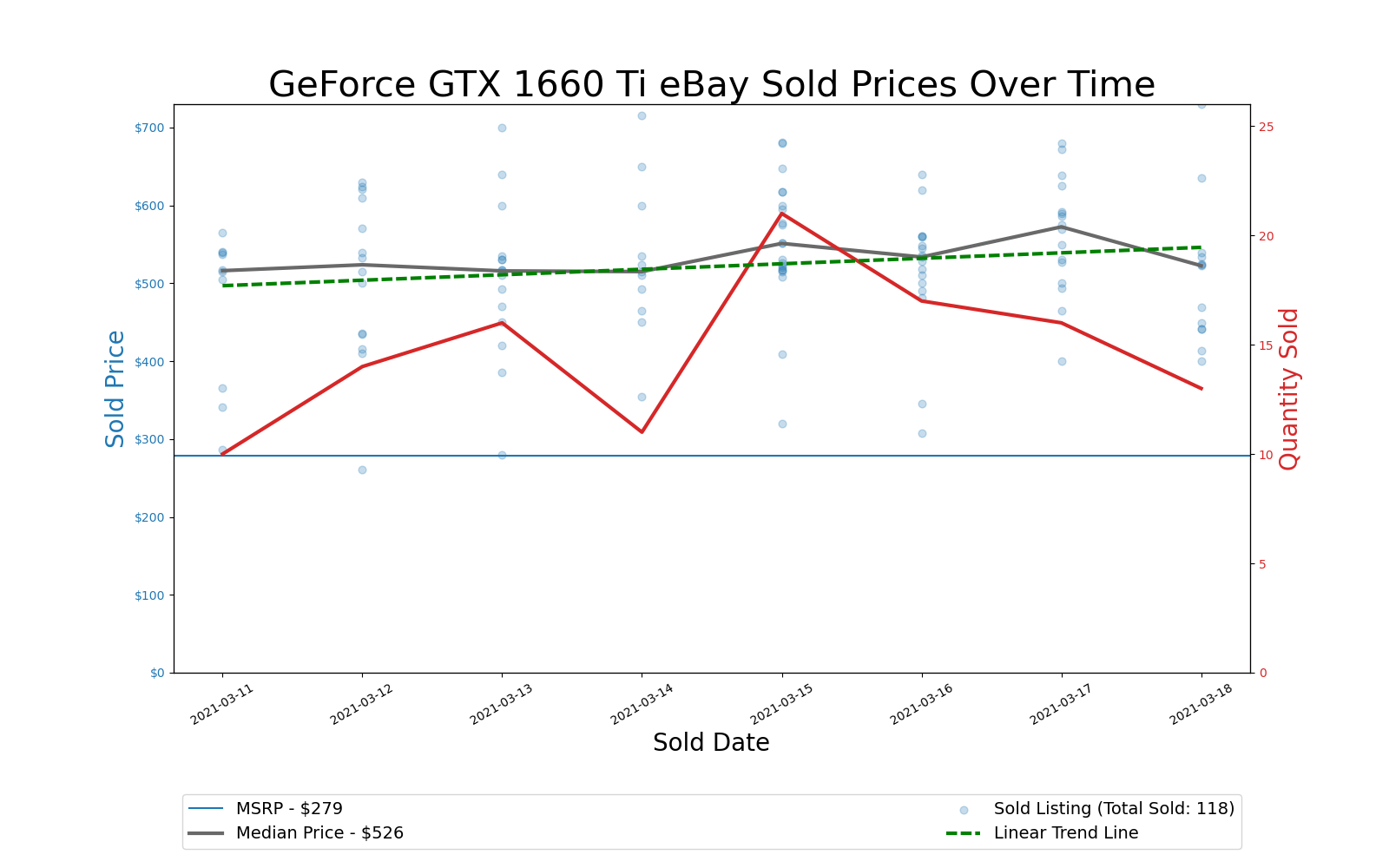



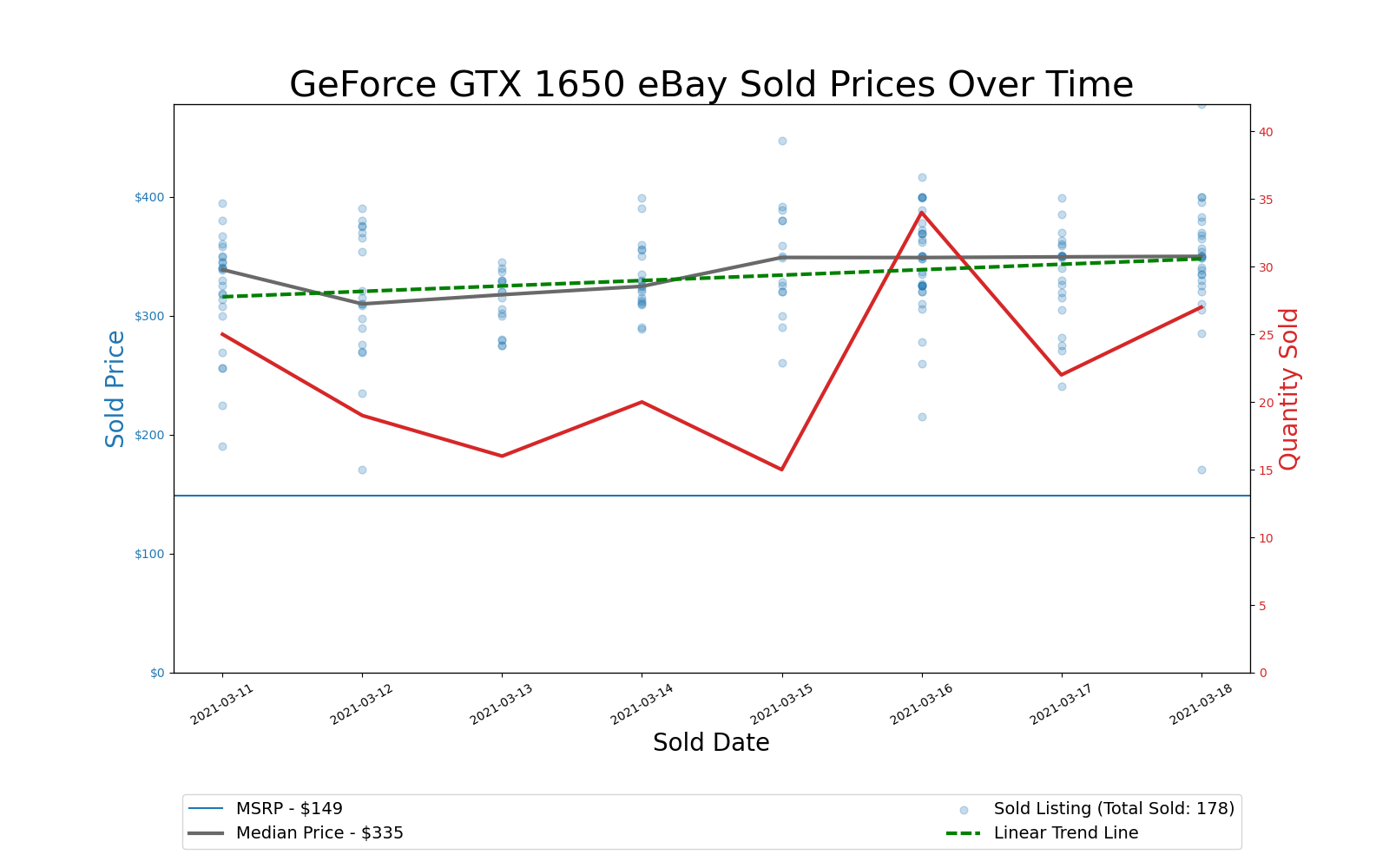




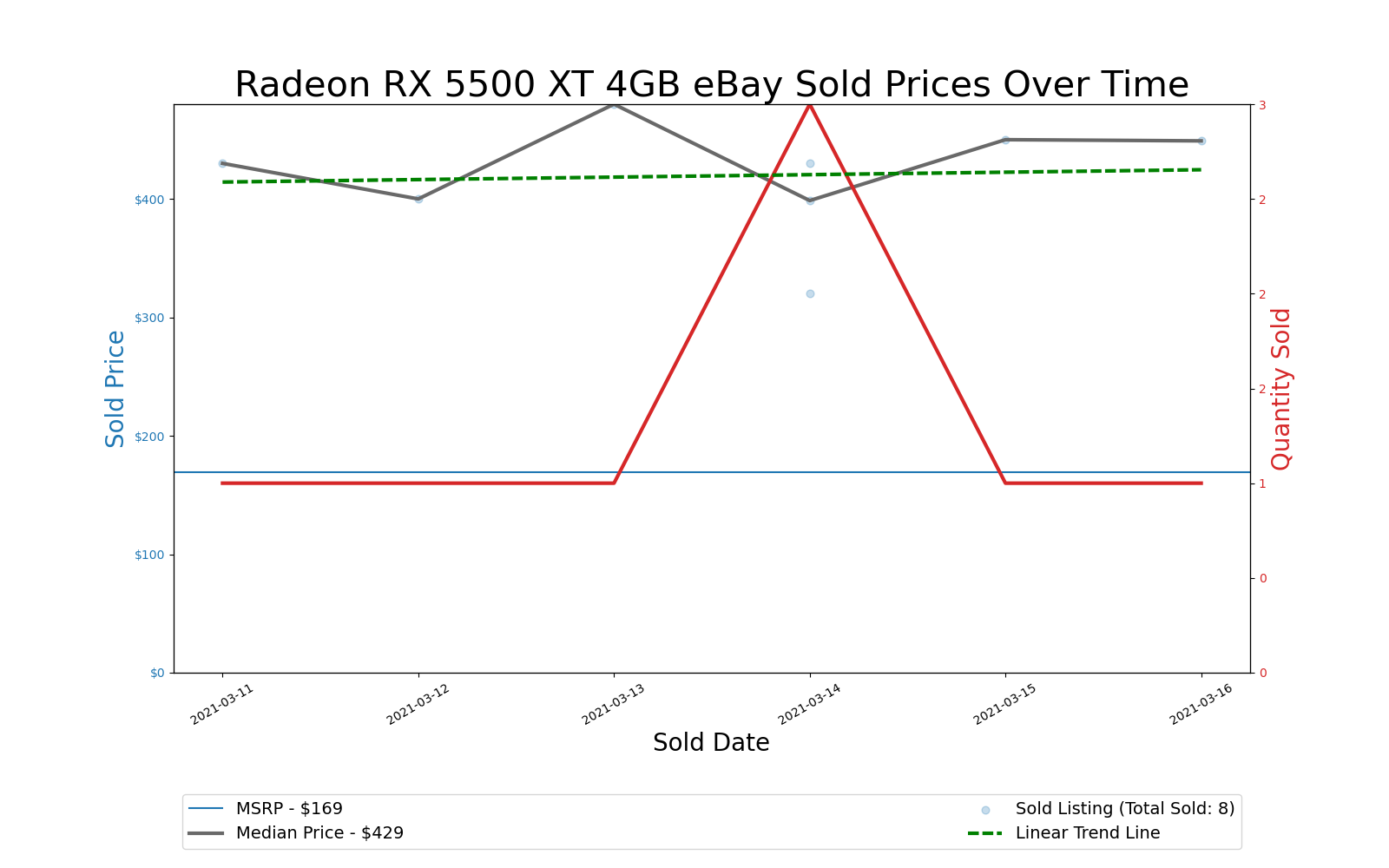
The previous generation Turing and RDNA1 cards tell a similar tale. Three showed a minor downward trend in eBay pricing, but all of the Turing cards combined only accounted for about 1,500 units sold. AMD's previous generation Navi GPUs on the other hand continue to outsell the RX 6000 models by around a 2:1 ratio, with 537 cards sold. About two thirds of those are RX 5700 XT models.
One interesting piece of information is that AMD's RDNA1 cards are often nearly as fast as RDNA2, as Ethereum mostly depends on memory bandwidth. The newer cards have a slight advantage, as their GDDR6 comes clocked at 16Gbps (and overclocks to 17.2Gbps), while the earlier models only did 14Gbps at stock. But RX 5700 XT can do 55MH/s vs. the RX 6800 XT's 64MH/s, so it's little surprise that miners are happy to take either card.
You might also wonder about the increase in pricing on cards with 4GB of VRAM. Ethereum mining isn't possible (at profitable rates, at least) on cards with less than 6GB VRAM. However, other hashing algorithms continue to work okay. Kawpaw for example can still net around $1 per day from the 5500 XT 4GB. That's a lot less than the 5500 XT 8GB's nearly $3 per day, but apparently not low enough to stop the miners.
Pascal, Vega, and Polaris Graphics Cards
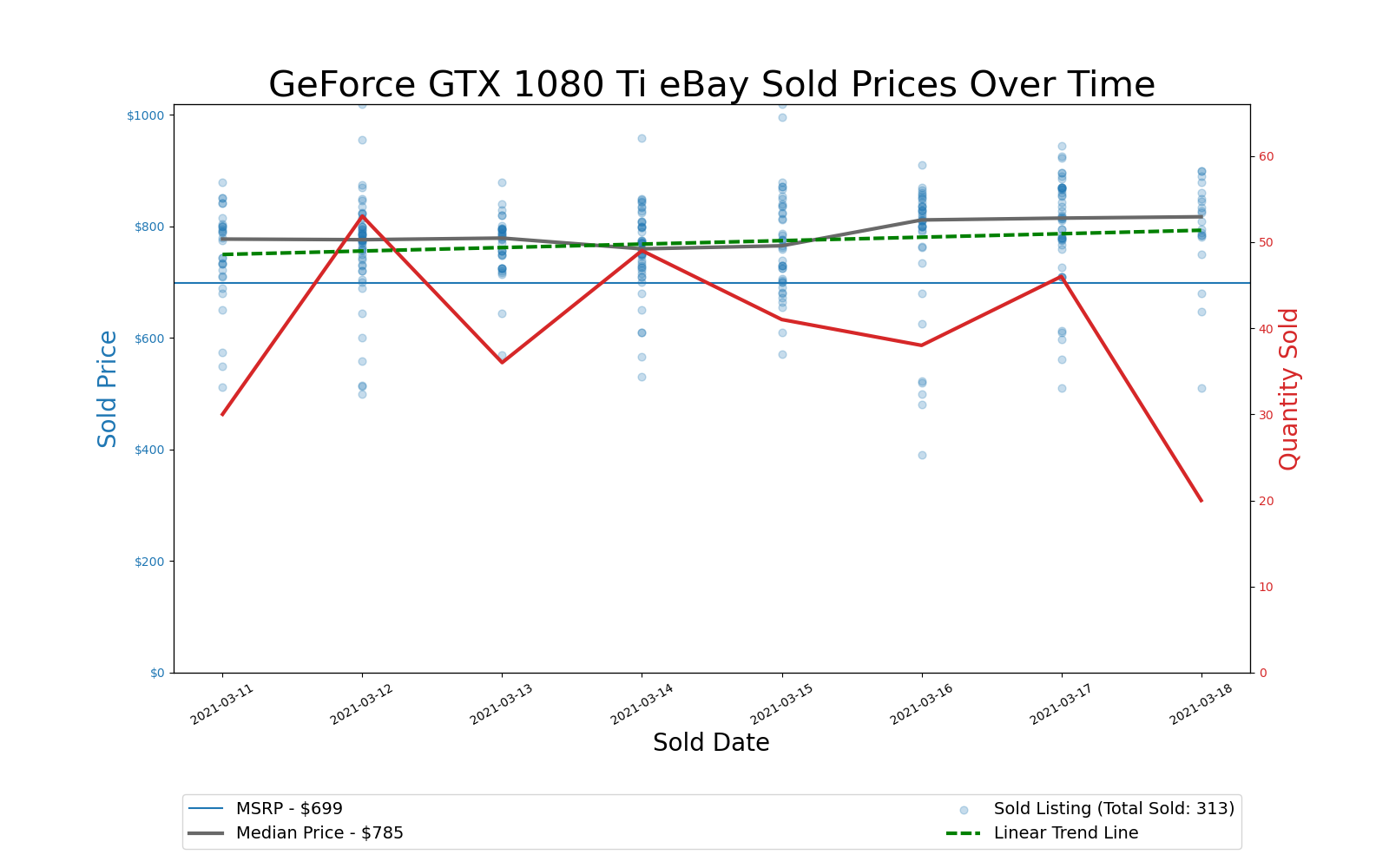









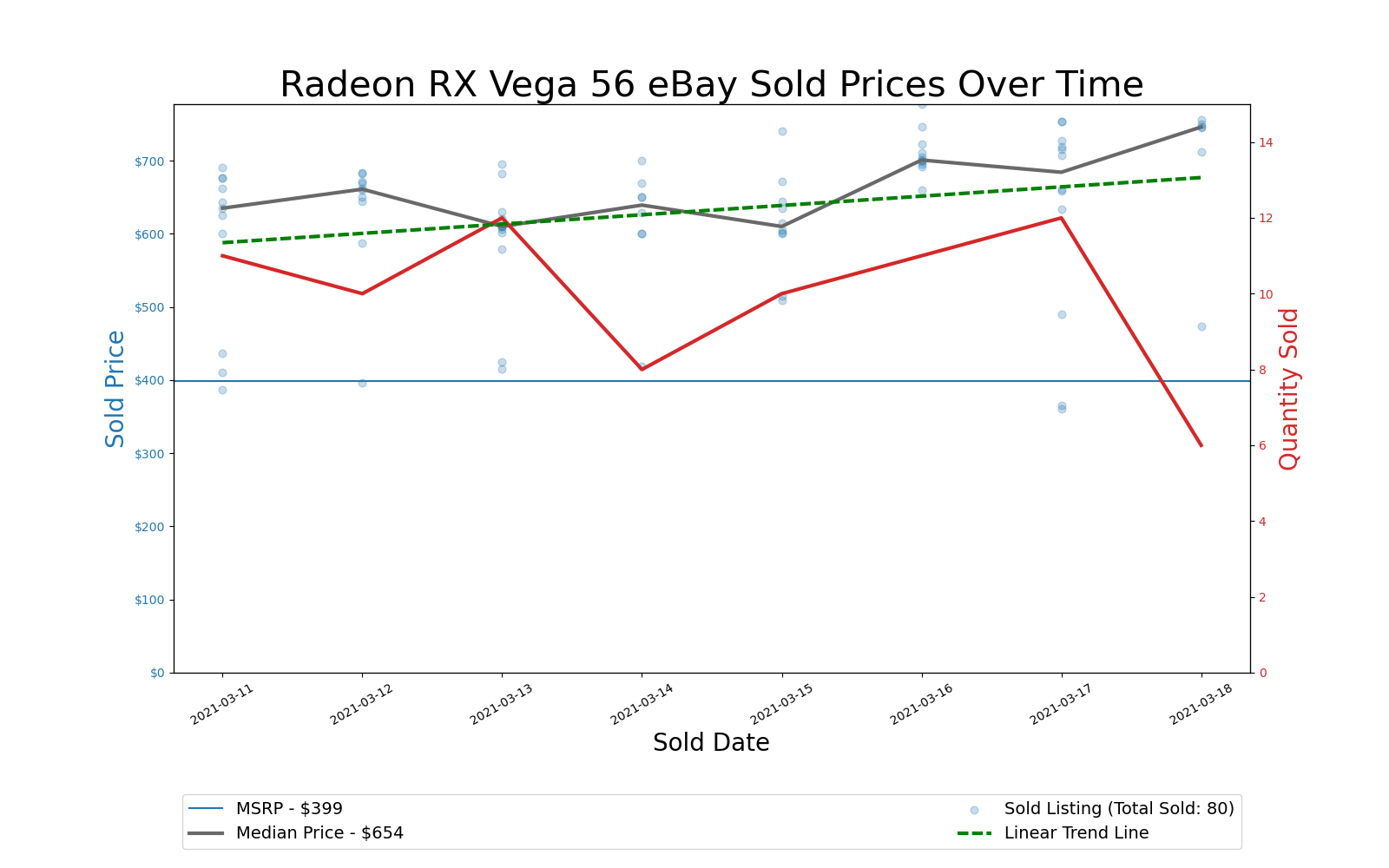









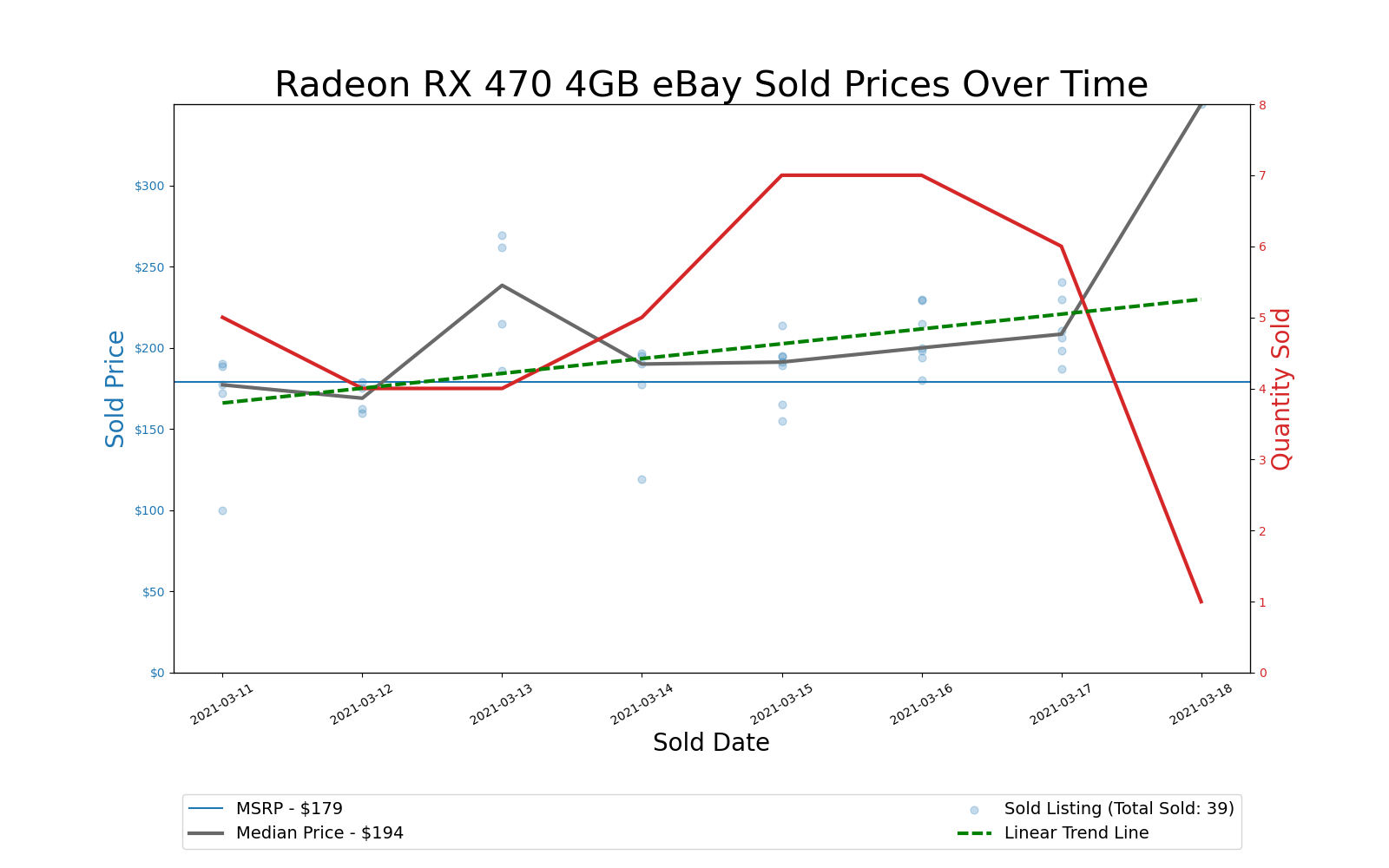

Even cards that mostly launched three or four years back remain in high demand. Normally, cards this old would cost less than half their launch prices. Or at least, that's about how much most gamers would be willing to pay. Pascal and Polaris GPUs might not be as fast as Ampere, Navi, and Turing for mining purposes, but they're still fast enough to turn a profit.
The exception (sort of) is cards with only 2GB or 3GB, like the GTX 1050 and 1060 3GB. While it's still possible to net about $0.75 per day after power costs with mining, most miners prefer going after higher performance models — connecting six or eight low-end cards to one PC takes some effort, so it's better to pay a bit more for higher performance parts.
If you just need a graphics card that can run games at modest settings, meaning 1080p medium or high, these old GPUs are your best bet right now. You're still looking at $200–$250, on eBay, but maybe you can find one for closer to $150 if you shop around.
Legacy GPUs and Titans








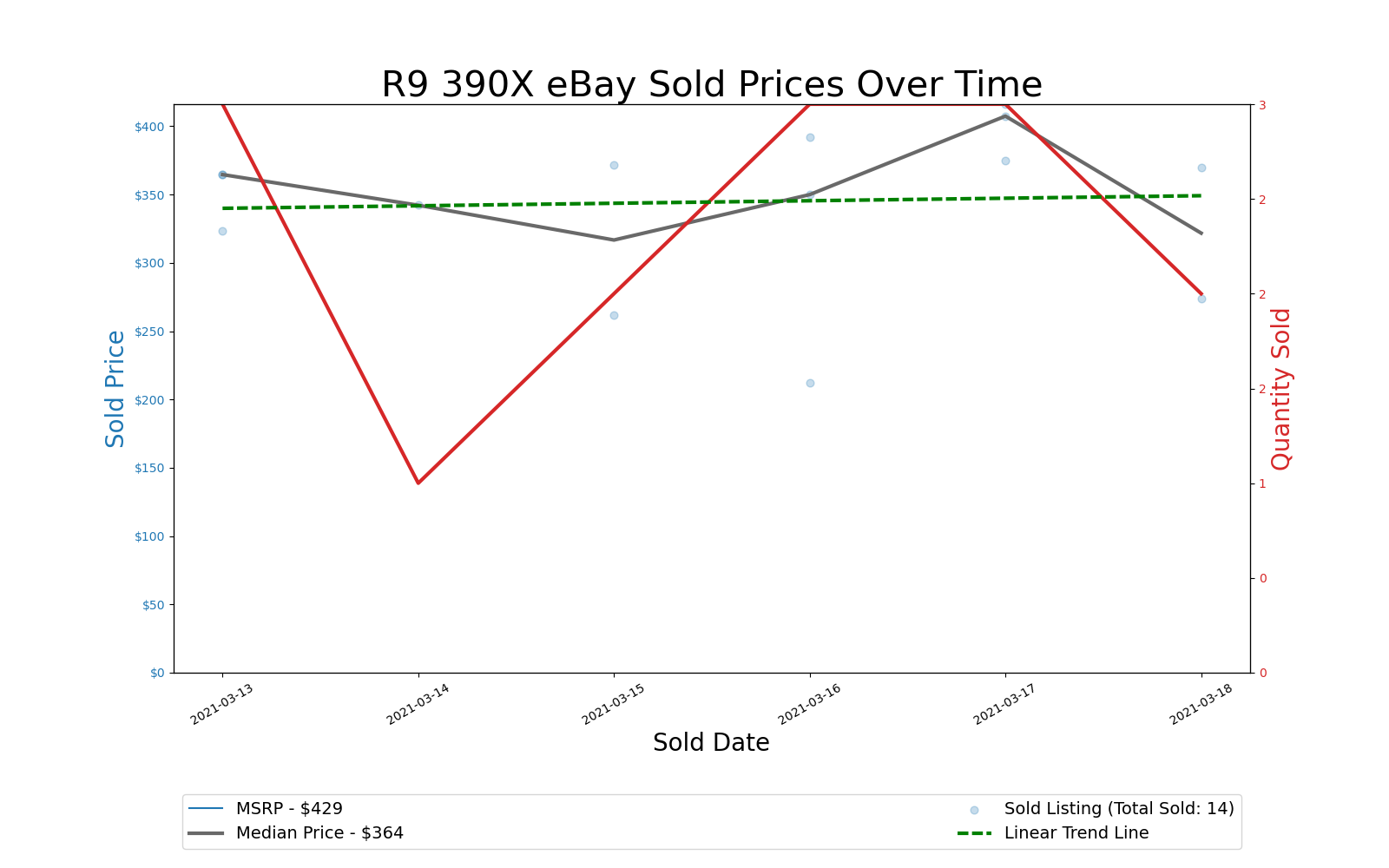

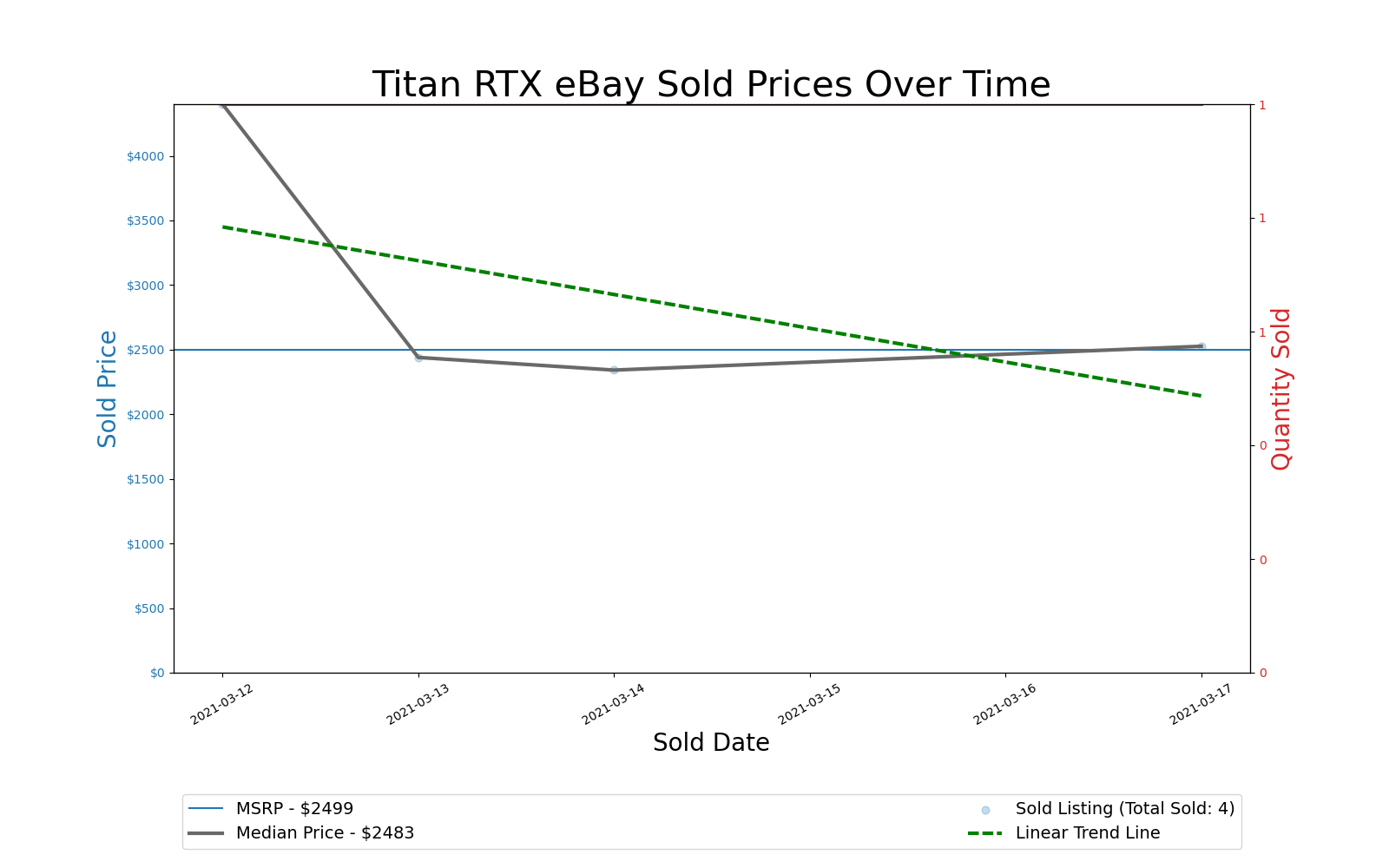



Even relatively ancient GPUs continue to cost a lot. Sure, it's only $350 or so for a GTX 980 Ti, which is about as fast as a GTX 1070, and at least the cards cost less than their original MSRPs. You can still play most games just fine on these GPUs as well, provided you turn down the settings and resolution. But paying $200 for a card that used to cost $300 and launched over six years back just hurts.
We've also included Nvidia's four most recent Titan cards for reference. Not surprisingly, there aren't many of these being sold, and prices are still higher than otherwise similarly performance GeForce models.
Weekly Summary: More Turbulence Ahead

While GPU prices on eBay remained relatively stable, the continued impact of mining profitability means there's no end in sight right now. Just when you start to think maybe the whole house of digital cards is ready to collapse, there was another jump in Bitcoin prices. It's not hard to see where the HODL mentality comes from, but at some point things will stabilize and return to something closer to 'normal.'
When will that happen? It's almost impossible to say, but certainly not before the supply issues get fixed, which means probably not until 2022 at least. GPU prices will almost certainly come down before then, but the lingering effects of the COVID-19 pandemic haven't cleared up.
Ethereum mining difficulty continues to go up, which means lower profits per GPU. Last week, Ethereum was at 5521 TH and this week it's at 5731 TH, so about 3.8% less coins for a given set of hardware. Even though you can only directly mine Bitcoin with ASICs, it's still possible to earn Bitcoin via GPU mining with services like NiceHash, which means it continues to impact demand for GPUs. Bitcoin doesn't adjust difficulty as often (about once every two weeks), and the last change on March 5 actually showed a drop of 1.3%. We'll have to see what happens during the next adjustment this coming week.
Stay On the Cutting Edge: Get the Tom's Hardware Newsletter
Get Tom's Hardware's best news and in-depth reviews, straight to your inbox.
Current page: Mar 11–18, 2021
Prev Page 90 Days of Data: December 2020 – March 2021 Next Page Mar 4 – Mar 11, 2021Jarred Walton is a senior editor at Tom's Hardware focusing on everything GPU. He has been working as a tech journalist since 2004, writing for AnandTech, Maximum PC, and PC Gamer. From the first S3 Virge '3D decelerators' to today's GPUs, Jarred keeps up with all the latest graphics trends and is the one to ask about game performance.
-
JarredWaltonGPU FYI, we're reorganizing some things and have a new forum thread here. Old comments were here: https://forums.tomshardware.com/threads/the-gpu-sadness-index-tracking-ebay-pricing.3689998/Reply
That is all. :cool:
